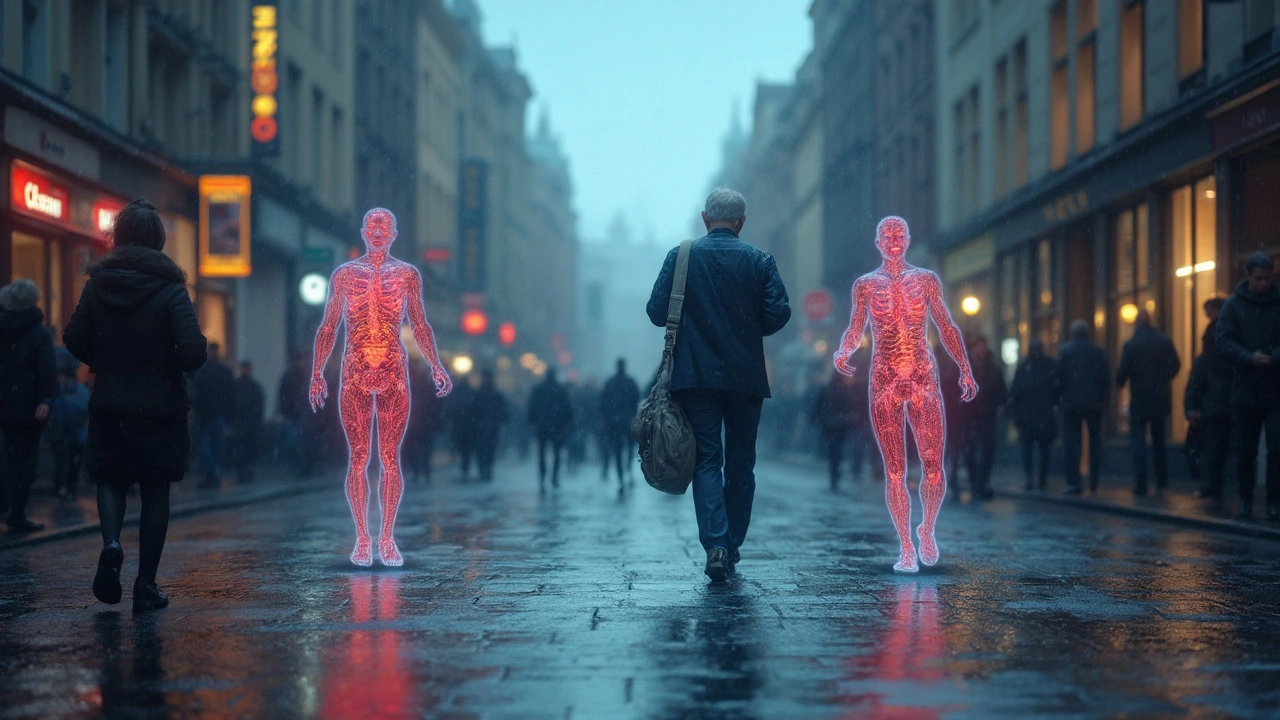Imagine your blood suddenly behaving like glue, clumping together and blocking your lifeline highways. That’s what happens when clots strike inside our blood vessels. It’s wild to think the same sticky mechanism that saves us from bleeding out when we scrape a knee can turn dangerous—deadly, even—inside our own hearts. This article pulls the curtain on why some clots are the heroes of the story and others flip the script, triggering heart attacks that change lives in seconds. And here’s something all too real: every 40 seconds, someone in the US has a heart attack, most linked to blood clots. Let’s break down what’s going on beneath your skin, why it matters, and what you can actually do to tip the odds in your favor.
How Do Blood Clots Form—And What’s Their Job?
Blood clots feel like a double-edged sword. On one side, they’re a built-in safety net, stopping bleeding when you’re injured. On the other, they can clog up arteries and cause chaos, especially in the heart. So what sets them off? The basic story starts with platelets—tiny cell fragments always floating through your bloodstream. When you cut yourself, those platelets race to the site, clumping together to plug the leak. They call for reinforcements by releasing chemicals, pulling in proteins that weave a mesh, and then hardening up. That’s a clot doing its proper job: fast and local, patching things up.
But a lot can mess with the process. Inside your arteries, years of stress, high cholesterol, or diabetes can damage the smooth liner of your blood vessels. Tiny cracks or rough patches collect gunk (especially that infamous LDL cholesterol), creating bulges called plaques. Now, when one of those plaques ruptures, it’s like a silent alarm going off for platelets: "There’s trouble—fix it!" Platelets swarm, a clot forms...except this time, there’s no bleeding, just a narrow artery now completely blocked. That can cut off blood flow to part of the heart—what doctors call a myocardial infarction, or the classic heart attack.
Here’s a stark visual: in a single teaspoon of blood, there can be up to a billion platelets. When things go wrong in the arteries, that’s a billion little chances for disaster. Not everyone knows blood clots aren’t always bad news, but also not always good news, either. There’s a delicate balance—tip too far and things get ugly. Certain genetic factors, some medications, and lifestyle habits can all nudge that balance. Did you know, for example, that long periods of sitting—like on a marathon flight—can raise your risk for clotting, not just in your legs but potentially sending dangerous fragments to your heart?
The Direct Connection: Blood Clots and Heart Disease
Heart disease doesn’t get its “silent killer” nickname for nothing. Much of its early work goes unnoticed, as soft plaques sneakily grow inside arteries. According to the American Heart Association, over 90% of heart attacks happen when a clot forms suddenly at the site of one of these plaques. You might feel just fine one day, then the next—bam—your heart’s starving for blood because a clot just slammed the door shut.
Let’s talk about what causes those dangerous—and mostly unexpected—clots. It’s all about inflammation and vessel injury. Over time, high blood pressure and smoking cause micro-injuries to artery walls. LDL cholesterol sneaks inside through these tears, and white blood cells rush in, trying to “clean up,” but the process ends up making things worse, layering fat, cells, and debris into plaque. At some point, maybe after a big meal or during a stressful moment, a thin cap over the plaque cracks open. The clotting system ramps into action, thinking it’s repairing something, but all it does is block blood flow.
There are several types of clots, too. Arterial clots are the ones responsible for most heart attacks; they’re fast-forming and dense, stopping blood circulation in its tracks. Venous clots, meanwhile, tend to happen in slower-moving veins, especially in the legs (think “deep vein thrombosis”). If one of those clots breaks loose and travels to the heart or lungs—hello, major emergency.
Here’s something not everyone realizes: not every plaque turns into a problem. Some are stable and thick, less likely to burst, and more likely to just slowly squeeze the artery shut over decades. Others are thin, vulnerable, more inflammatory, and just waiting to rupture. Teens can start building up these risky spots as early as 15 or 16, especially if they’re already dealing with conditions like obesity or serious stress. Genetics can play a nasty role, too. Having a parent who had a heart attack before age 50 more than doubles a person’s own risk.
To get concrete, check out this table with stats straight from recent heart studies:
| Risk Factor | Increased Risk of Blood Clots |
|---|---|
| Smoking | 2.5 times higher |
| Obesity (BMI above 30) | 2 times higher |
| Family history (early heart disease) | 1.8 times higher |
| High LDL cholesterol | 2.8 times higher |
| Physical inactivity | 1.7 times higher |
If you’re stacking a few of these risks at once, your arteries see a lot more action and are way more likely to hit trouble with clots.

Who’s Most at Risk—and Why?
Here’s the gut punch: you can look, feel, and act healthy and still be a walking time bomb for heart disease, thanks to how blood clots form. But the numbers don’t lie. Men over 45 and women over 55 move into the danger zone, but younger folks aren’t immune—especially if smoking, high blood sugar, or being very overweight are in the mix. Women who take hormone therapy or certain types of birth control see their clot risks climb, particularly if they smoke or have a family history of thrombosis.
Certain chronic illnesses make matters even worse. Diabetes thickens the blood and makes platelets stickier; autoimmune disorders like lupus and rheumatoid arthritis lead to hyperactive immune systems that ends up damaging arteries. There’s a cluster effect here: people dealing with more than one risk—maybe high blood pressure with obesity and sedentary habits—face a risk skyrocketing tenfold compared to folks without.
Another fascinating twist involves race and ethnicity. Black Americans, for instance, tend to develop heart disease younger and are more at risk for severe complications, in part due to genetic tendencies for both high blood pressure and higher clotting factors. South Asians are also hit hard, often showing heart trouble a decade earlier than other groups.
Lifestyle throws its weight around, too. People working desk jobs or who spend hours each day glued to screens double their likelihood of developing dangerous blood clots versus folks who move regularly. Stress links up in sneaky ways—not just through "bad choices," but also by triggering stress hormones that amp up blood pressure and push blood to clot more easily.
Ever heard of Factor V Leiden? It’s an inherited genetic change found in about 5% of people of European descent. People with this variant are much more likely to form clots, even if everything else in their lives looks low-risk. It’s a bit of a wild card; the kind of fact that can change a family’s fate if discovered early. Sometimes people only find out they have it after a scare, like a young person having a heart attack with no obvious reason.
And then there are temporary risks: surgery, injuries, pregnancy, long flights, and even COVID-19 (which sometimes triggers an overactive clotting response). Every risk factor you stack makes the system more likely to slip up, so the goal isn’t avoiding all risk—just tipping the balance back in your favor wherever possible.
How to Lower Your Risk: Tips That Actually Work
This might surprise you, but most heart attacks are actually preventable. Tons of research points to lifestyle as the most powerful lever for lowering the odds. Moving more is the biggie. Just 20-30 minutes of brisk walking five times a week cuts heart disease and clot risk by almost 40%, says a 2023 study out of Harvard. That’s not training for the Olympics—that’s just walking your dog or doing chores outside without sitting down every ten minutes.
Nutrition makes a huge dent, too. Diets high in saturated fat (like fatty red meats, butter, and lots of processed snacks) inflate your LDL cholesterol and make plaques more unstable. Replacing those foods with lean proteins, lots of veggies, nuts, and salmon or sardines can lower bad cholesterol within a few months. One trick: eat a handful of raw, unsalted almonds before meals. They're loaded with healthy fat and fiber, and research shows they nudge the clotting system toward a healthier balance.
Smoking really is as bad as you’ve heard. It damages the inner lining of your arteries in a matter of weeks. The good news? Quit smoking and within a year your risk of a clot-linked heart attack drops by at least half. Vaping may seem harmless but can still trigger platelets to get stickier—so don’t trade one risk for another.
- Move around every hour, especially on long car rides or flights. Even ankle circles and toe wiggles can help.
- Manage stress with deep breathing, a hobby you love, or just talking with friends. Stress chemicals mess with clotting, so keeping calm helps.
- Keep your blood pressure and blood sugar in check. If you have diabetes, taking meds reliably really matters.
- Don’t skip yearly checkups—cholesterol checks, blood pressure readings, and maybe special tests if you have a family history.
- Stay hydrated. Thick blood clots more easily, so drink water even if you’re not thirsty, especially in heat or when exercising.
- Watch out for warning signs: chest pain, sudden shortness of breath, or unexplained leg swelling. These aren’t symptoms to ignore.
If you’ve ever had a clot before, your doctor might suggest medications called anticoagulants (blood thinners). They sound scary, but they’re like a safety net that keeps the clotting balance from swinging too far one way. For some heart patients, daily aspirin helps, but it’s not for everyone—so don’t start it without talking to a doctor.
What about fancy new tech? Wearable devices and smart watches can catch episodes of irregular heartbeats (like atrial fibrillation) that sneakily raise clot risk. Not a bad reason to upgrade if you’re already thinking about a new gadget. And it goes without saying—if someone in your family has a heart attack or unexplained clot, genetic testing can give you answers and save lives.

Looking Ahead: What The Latest Research Means for You
Doctors are finally piecing together the real story of blood clots and heart disease. Not that long ago, people just thought arteries slowly clogged, end of story. Now we know it’s the clots—sudden, surprising, and sometimes preventable—that tip many people over the edge. Researchers at the Cleveland Clinic recently found about 70% of so-called silent heart attacks (ones you never even notice) involve clots forming on top of existing plaques. Modern imaging lets us spot those vulnerable spots much earlier, before disaster hits.
p>Anticoagulant drugs are getting smarter, too, tuned to your own genetics and clotting tendencies. Personalized medicine, already happening in clinical trials, means your risk profile could decide the best mix of drugs, diet, and exercise for you. And for folks with rare clotting disorders, treatments can now turn off the exact chemical signal that’s causing trouble—no need for lifelong blood-thinning risks.
Another twist coming down the line involves gut bacteria. Studies at Johns Hopkins show that certain bacterial byproducts can nudge your clotting system, raising or lowering the odds of a dangerous event. So we might one day eat for heart health by actually tweaking our gut microbiome, not just our cholesterol.
If there’s one takeaway, it’s this: understanding how blood clots and heart disease play off each other is power. You’re not just a victim of your genes or your history—there’s so much you can tweak, starting today. That next salad, dog walk, or decision to call a friend instead of stress-eating after work? That’s not just good for your mind—it’s literally helping your heart avoid its biggest threat: a sudden, sneaky blood clot where it matters most.


Dean Briggs
May 17, 2025 AT 17:08The relationship between blood clot formation and coronary artery disease is a fascinating interplay of biology, physics, and lifestyle choices. When a plaque ruptures, the body's hemostatic machinery springs into action, mobilizing platelets and fibrin to seal what it perceives as a wound. In an ideal scenario this response saves us from hemorrhage, but within the confined space of an artery it can become a lethal plug. The speed at which arterial clots solidify is astonishing; within seconds the lumen can be occluded, depriving myocardial tissue of oxygen and nutrients. This abrupt loss triggers the cascade we recognize as a myocardial infarction, a condition that claims millions of lives each year. Yet the same cascade is also the reason we survive cuts and bruises, illustrating the double‑edged nature of our clotting system. Genetic predispositions, such as Factor V Leiden, tip the balance toward hypercoagulability, while chronic inflammation from smoking or diabetes erodes the protective endothelial layer. The endothelium normally releases nitric oxide and prostacyclin, both of which inhibit platelet adhesion, but when it is damaged those safeguards fade. Lifestyle interventions-regular aerobic activity, a diet low in saturated fats, and cessation of tobacco-can restore endothelial function and reduce the propensity for plaque rupture. Moreover, modern pharmacology offers antiplatelet agents and anticoagulants that fine‑tune the clotting response without eliminating it entirely. The challenge lies in personalizing therapy based on individual risk profiles, a goal that precision medicine is beginning to achieve. Emerging research into the gut microbiome suggests that microbial metabolites may modulate platelet reactivity, adding another layer of complexity to prevention strategies. In practice, this means that a simple habit like chewing almonds or staying well‑hydrated could have measurable effects on clot formation. Ultimately, understanding the symbiosis of clotting and heart disease empowers us to make informed choices that keep the protective aspects of thrombosis while minimizing its deadly potential. So while the image of blood behaving like glue is unsettling, it also reminds us that our bodies are remarkably adaptive, and that we have a suite of tools-both behavioral and medical-to keep that glue from solidifying where it should not.
Sadie Speid
May 30, 2025 AT 04:11Great summary! Your points on lifestyle tweaks are spot‑on, and I love how you tied the gut microbiome into clot risk.
Sue Ross
June 11, 2025 AT 15:14I appreciate the balanced view on both the protective and harmful aspects of clotting. It’s reassuring to know that small daily habits can make a measurable difference.
Rohinii Pradhan
June 24, 2025 AT 02:18While the article provides a comprehensive overview, it occasionally conflates arterial thrombosis with venous thromboembolism; these pathophysiologies differ markedly in etiology and clinical management.
Anna-Lisa Hagley
July 6, 2025 AT 13:21Indeed, the distinction is crucial, yet the broader philosophical implication-that our bodies constantly negotiate between preservation and destruction-remains underexplored.
A Walton Smith
July 19, 2025 AT 00:24Clotting is both friend and foe.
Theunis Oliphant
July 31, 2025 AT 11:28Ah, the tragic irony of a system designed to save us becoming our executioner! Such paradoxes are the very essence of mortal frailty.
India Digerida Para Occidente
August 12, 2025 AT 22:31The interplay between inflammation and coagulation is a vivid reminder that our physiological networks are not isolated silos but dynamic conversations; appreciating this can guide more holistic treatment approaches.
Andrew Stevenson
August 25, 2025 AT 09:34Absolutely-by leveraging anti‑inflammatory pharmacotherapy alongside traditional antiplatelet regimens, clinicians can target both arms of this crosstalk, potentially curbing the cascade before it culminates in occlusion.
Kate Taylor
September 6, 2025 AT 20:38I’ve seen patients transform their risk profiles simply by swapping out processed snacks for nuts and committing to a brisk 30‑minute walk most days; it’s amazing how small adjustments compound over time.
Hannah Mae
September 19, 2025 AT 07:41i guess diet ain’t the only factor-stress and genetics play big roles too, so don’t think food alone will fix everything.
Iván Cañas
October 1, 2025 AT 18:44From a cultural perspective, many societies have traditional diets rich in omega‑3 fatty acids and communal activities that naturally support cardiovascular health; integrating these practices can complement modern medical advice.
Jen Basay
October 14, 2025 AT 05:48Totally agree 😊! Adding a daily habit like stretching can keep the blood flowing and reduce clot risk.
Hannah M
October 26, 2025 AT 17:08Exactly! 🚀 Small, consistent actions are the real game‑changers for heart health.